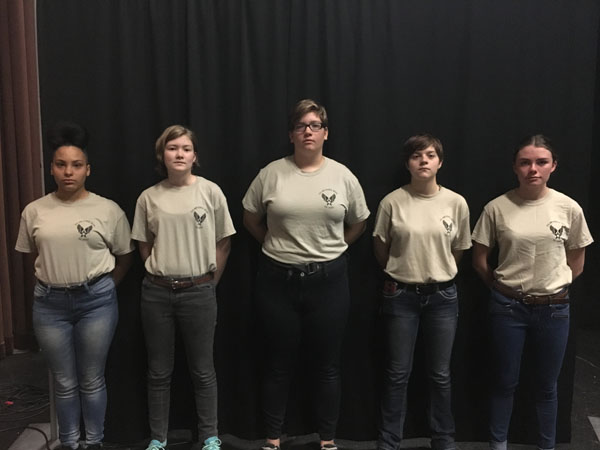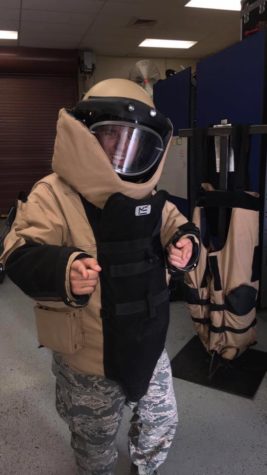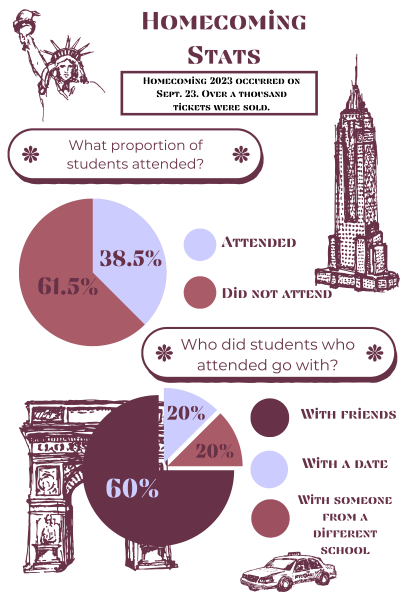Women in military lacking in front-line combat roles

Perry AFJROTC girls left to right: Michaela Fleming, Sierra Morgan, Macayla Davis, Lexie Pella, McKenzie Wessing
Women are flocking to the medical and teaching fields in large masses; which is why these fields are mostly known to the public as ‘pink-collar.’ However, when taking a glance at the military in general, why are there not as many women as the ‘pink-collar’ jobs? There are ‘pink-collar’ jobs available in the military but the training required is much different from the citizen ‘pink-collar’ jobs.
Just recently the U.S. Army has allowed women into front-line combat roles in the infantry. Infantry soldiers interact with insurgents face-to-face.
Colonel Clifford Stansell is the Senior Aerospace Science instructor in charge of the Air Force Junior Reserve Officer Training Corps (AFJROTC), a military-based program for high school students. This program is offered to Perry, Basha, and Casteel in which they are partnered together for.
“The military should advertise [themselves] in a way that ensures that everyone — no matter their gender, race, color, or religion — feels that a military career and all that it entails is just as available to them as it is anyone else,” Col. Stansell said.
There are six females in AFJROTC for the Perry division. Col. Stansell saw that the female population in the program is less than the male population. This phenomena is the present in the military as well. According to Statistic Brain, the total Army’s population is 13.6 percent females; Marine Corps is 6.8 percent; Navy is 16.4 percent; Air Force is 19.1 percent; and Coast Guard is 15.7 percent.
Sierra Morgan, a freshman who wants to join the Navy as a mechanic, said , “I don’t like how people are discriminating by letting women down and letting the men take the front. I think that they should have an equal chance at everything.”
The Navy started allowing women in their ranks after the Vietnam War. The Marines began after World War II. The Air Force started in 1948. The Army started in 2000, but women were only allowed into administrative roles and combat roles were opened in 2012 under the Obama Administration.
Lexie Pella, a sophomore who wishes to enlist in the Air Force, said, “it’s hard to do what the men do in JROTC because [the instructors] don’t change it at all. We don’t get an ‘easy-go’ because we’re women. Everyone is a person. You’re just equal.”

Hi, my name is Morgan. I am a senior at Perry and this is my second year in newspaper. I write about Math, Science, STEM, local news, and local government....

Cameron Martin is a senior at Perry. He is the double truck editor, social media coordinator, and also covers the following beats:
-Food review
-Video...





